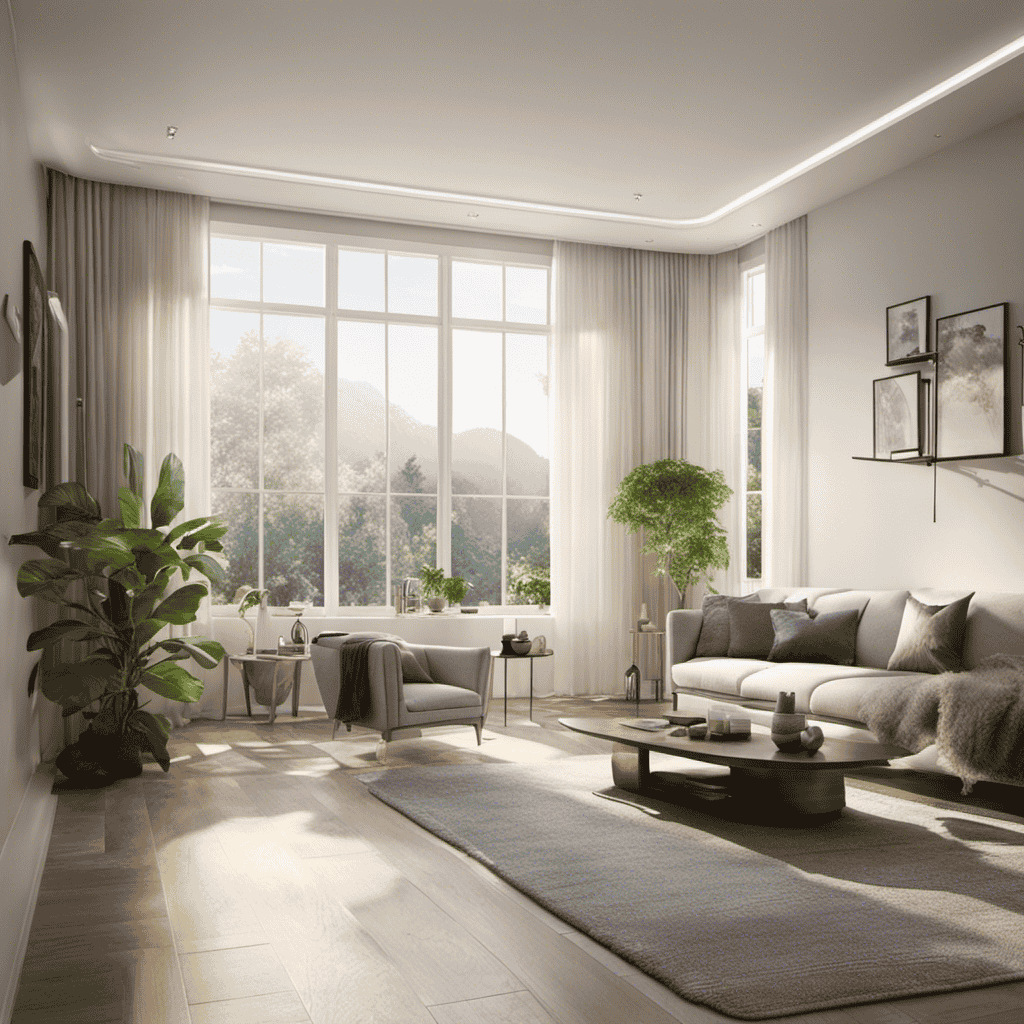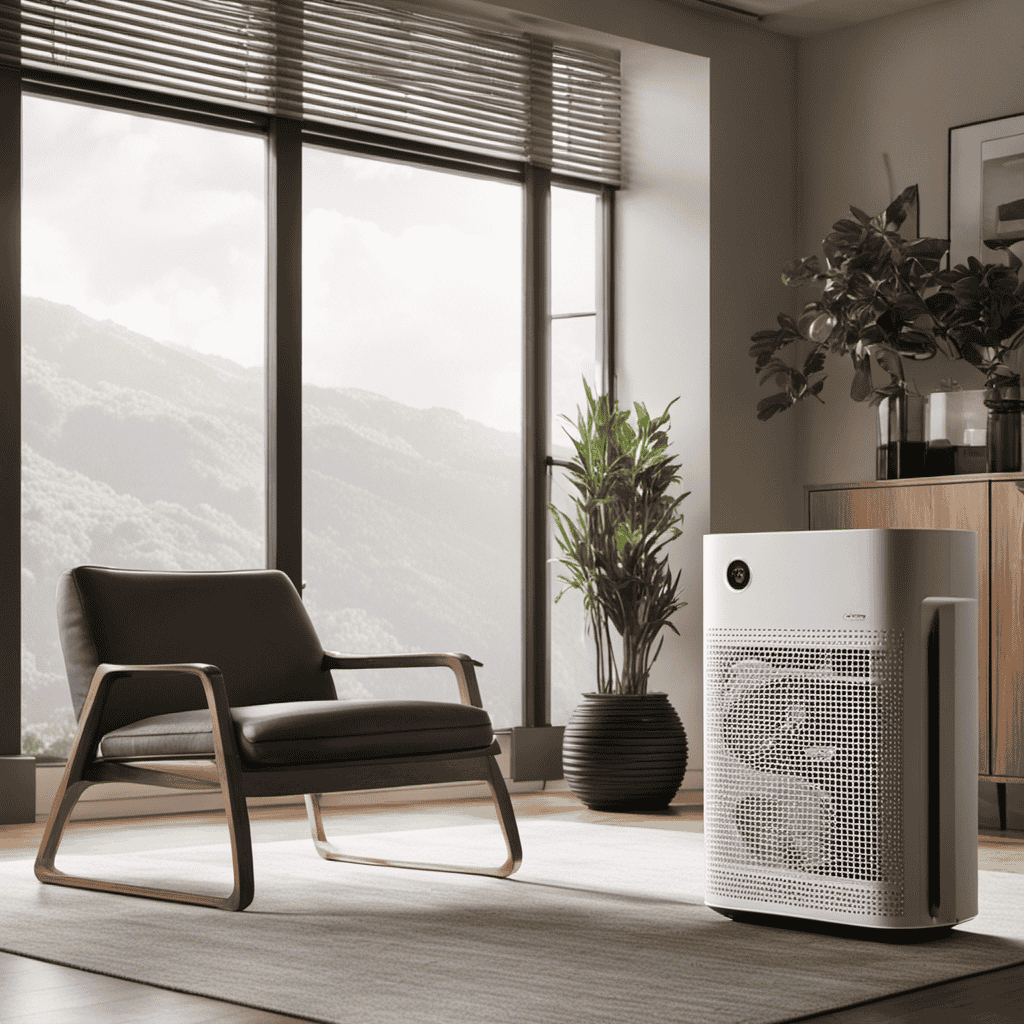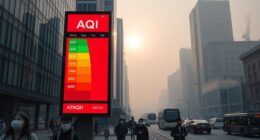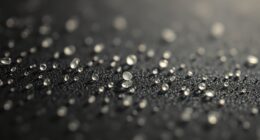I have attempted all possible methods to remove my dog’s hair, but it feels like an endless struggle. From vacuuming and brushing to lint rolling, I have tried every possible solution.
That’s when I discovered the power of an air purifier. Let me tell you, it’s been a game changer. The right kind of air purifier can effectively remove dog hair from the air, making your home a haven of cleanliness.
In this article, I’ll guide you through the factors to consider, types of purifiers, key features, sizing, and maintenance tips to help you find the perfect air purifier for your furry friend’s hair.
Key Takeaways
- Size of the room and the specific needs of your pet should be considered when choosing an air purifier for dog hair.
- HEPA, activated carbon filters, ionic, and UV-C light purifiers are effective in removing dog hair.
- Key features to look for include a HEPA filter, models designed to target pet dander, and additional features like activated carbon filters and UV-C light technology.
- Determining the right size air purifier involves measuring the square footage of the room, considering the air purifier’s CADR rating and ACH rate, and opting for a purifier with a HEPA filter.
Factors to Consider When Choosing an Air Purifier for Dog Hair
When choosing an air purifier for dog hair, there are a few factors to consider.
Firstly, you’ll want to think about the size of the room. This is important because it determines the capacity of the air purifier you need. If you have a large room, you’ll need a purifier with a higher airflow rate to effectively remove dog hair and dander.
Next, consider the specific needs of your pet. Some dogs shed more than others, and if your furry friend is a heavy shedder, you may need a more powerful air purifier.
The benefits of using air purifiers for dog hair are numerous. They can help reduce allergies and asthma symptoms, eliminate pet odors, and improve overall air quality in your home.
Types of Air Purifiers That Are Effective in Removing Dog Hair
To effectively remove dog hair, you should consider using an air purifier specifically designed for pet owners like myself. These devices can help to eliminate pet dander and hair from the air, making your home cleaner and more comfortable.
Here are four types of air purifiers that are effective in removing dog hair:
-
HEPA (High-Efficiency Particulate Air) Purifiers: These purifiers have a fine mesh that traps tiny particles like pet hair and dander, ensuring clean and fresh air.
-
Activated Carbon Filters: These filters are great for removing odors caused by pets, as well as capturing larger particles like dog hair.
-
Ionic Air Purifiers: These purifiers release negative ions into the air, which attach to positively charged pet hair and cause it to fall to the ground.
-
UV-C Light Purifiers: These purifiers use ultraviolet light to kill airborne bacteria and viruses, as well as break down pet hair and dander.
Using air purifiers designed for pet owners can have several benefits, such as reducing allergies and asthma symptoms, minimizing pet odors, and keeping your home cleaner overall.
Some popular air purifier brands that are recommended for dog owners include Dyson, Honeywell, Winix, and GermGuardian. Invest in a high-quality air purifier, and say goodbye to pesky dog hair floating around your home.
Key Features to Look for in an Air Purifier for Dog Hair
One important feature to consider in an air purifier for dog hair is a HEPA filter. HEPA stands for High Efficiency Particulate Air, and these filters are specifically designed to capture particles as small as 0.3 microns. This makes them highly effective in removing pet dander, which is a common allergen for many people.
When choosing the right air purifier for pet allergies, it is essential to look for models that have been specifically designed to target pet dander. Some of the best air purifiers for pet dander include brands like Dyson, Winix, and GermGuardian. These models often come with additional features such as activated carbon filters to help eliminate odors, as well as UV-C light technology to kill bacteria and viruses.
How to Determine the Right Size Air Purifier for Your Dog’s Hair
You can easily determine the right size for your furry friend’s air purifier by considering the square footage of the room where it will be placed. Here are some tips to help you choose the right air purifier size for dog hair:
-
Measure the square footage of the room: Use a tape measure to determine the length and width of the room. Multiply these two numbers to get the square footage.
-
Consider the air purifier’s CADR rating: CADR stands for Clean Air Delivery Rate and measures the purifier’s ability to remove pollutants. Choose an air purifier with a CADR rating that matches the square footage of your room.
-
Look for a high air change per hour (ACH) rate: ACH measures how many times the air purifier can clean the room’s air in an hour. Aim for an ACH rate of at least 4 for effective removal of dog hair.
-
Opt for a purifier with a HEPA filter: HEPA filters are highly efficient at trapping pet dander and hair, ensuring cleaner air for you and your furry friend.
Choosing the right air purifier size for dog hair has several benefits, including:
-
Reduction of allergens: An appropriately sized air purifier will effectively remove dog hair and dander, reducing the risk of allergies and respiratory issues.
-
Cleaner indoor environment: With a properly sized air purifier, you can maintain a cleaner and healthier home environment by minimizing the presence of dog hair and other pollutants.
-
Improved air quality: A suitable air purifier will help remove pet odors and other unpleasant smells associated with dog hair, ensuring fresher and more breathable air.
-
Minimized cleaning efforts: By using an air purifier, you can significantly reduce the amount of time and effort spent on cleaning up dog hair, making your life easier and more convenient.
Maintenance Tips for Keeping Your Air Purifier Effective Against Dog Hair
Regularly replacing the filter is essential in keeping your air purifier effective against dog hair. Dog hair can quickly clog the filter, reducing its efficiency and preventing it from effectively capturing allergens and pollutants.
Cleaning techniques are also important to maintain the performance of your air purifier. Vacuuming the exterior of the purifier regularly can help remove any hair or dust buildup. Additionally, wiping down the surface with a damp cloth can help remove any stubborn particles.
It’s important to note that dog hair allergies are common among individuals. To minimize allergy symptoms, it’s crucial to choose an air purifier with a HEPA filter, as it can effectively capture and remove dog hair and dander from the air.
Frequently Asked Questions
Can I Use a Regular Air Purifier to Remove Dog Hair, or Do I Need a Specific Air Purifier for That?
Using a regular air purifier for dog hair removal can have its pros and cons. While it may help to some extent, a specific air purifier designed for pet hair removal is more effective. To maintain its effectiveness, clean the purifier regularly and consider using a HEPA filter.
How Often Should I Change the Filters in My Air Purifier to Effectively Remove Dog Hair?
To effectively remove dog hair from my air purifier filters, I make sure to change them regularly. It’s crucial for maintaining the purifier’s efficiency and keeping the air clean. I do it as often as needed, depending on the amount of dog hair in the environment.
Are There Any Specific Air Purifier Brands That Are Known for Being Highly Effective in Removing Dog Hair?
When it comes to removing dog hair, the best air purifier brands for pet dander removal are ones that have strong filtration systems and high CADR ratings. To choose the right air purifier for dog hair, consider the size of your space and the specific needs of your pet.
What Is the Average Price Range for a Good Quality Air Purifier for Dog Hair?
In my experience, the average price range for good quality air purifiers is around $100 to $300. When it comes to removing pet hair, the best air purifiers are those with HEPA filters and strong suction power.
Can I Use an Air Purifier in Multiple Rooms, or Do I Need One Specifically for Each Room Where My Dog Spends Time?
I can definitely use an air purifier in multiple rooms for dog hair. It helps to reduce allergens, pet dander, and odors throughout the house. It’s a practical option to ensure clean air for everyone, including your furry friend.
Can a Sonic Air Purifier effectively remove dog hair from the air?
The sonic air purifier efficiency captured in removing dog hair from the air is unmatched. Its advanced technology ensures that even the finest particles of pet hair are effectively trapped, leaving the air clean and fresh. Say goodbye to sneezing and allergies caused by pet hair with the power of a sonic air purifier.
Conclusion
In conclusion, when it comes to choosing the right air purifier for dog hair, there are several factors to consider.
Look for air purifiers that are specifically designed to remove pet hair and dander, such as HEPA filters. Additionally, consider the size of the air purifier and the maintenance required to keep it effective.
One interesting statistic that might surprise you is that according to a study conducted by the American College of Allergy, Asthma, and Immunology, more than 50 million Americans suffer from allergies, with pet dander being a common trigger.
Therefore, investing in a high-quality air purifier can greatly improve the air quality in your home and reduce allergy symptoms caused by dog hair.










